Brentford overthrew Bournemouth and Swansea ousted Barnsley to make the EFL Championship final. Thomas Frank’s side have to be noted down as the favourites after fighting back from being 2-0 down to beat The Cherries. Steve Cooper’s team are definitely strong competitors, however, and their watertight defence will be tough for Brentford to blast their way through.
Swansea will be out for revenge against Brentford, after being knocked out by The Bees in last season’s playoff semi-finals. The 2020/21 campaign saw two draws between the sides in league play, but this game has to have a victor at the end of it. Both sides have playoff experience, and both sides are looking to avenge past defeats, it should make for an exciting final.
This tactical preview will preview the tactics of both teams, the line-ups they could choose, and a final prediction as to who could win this fixture.
Predicted lineups
Brentford (3-4-1-2): David Raya; Henrik Dalsgaard, Pontus Jansson, Ethan Pinnock; Mads Roerslev, Mathias Jensen, Vitaly Janelt, Sergi Canós; Emiliano Marcondes; Ivan Toney, Bryan Mbeumo.
Brentford’s recent switch from a 4-3-3 to a 3-4-1-2 saw an upturn in form after a plethora of successive draws in the March period, but it did result in some absentees. Mads Bech Sørensen, a regular at left centre-back in their back four has made way for Pinnock in the back three. In a similar switch, Rico Henry featured frequently at left-back but has made way for Canós in the more attacking wing-back role. Josh Dasilva’s hip injury sustained in March still sees him missing out here.
Swansea (4-3-3): Freddie Woodman; Kyle Naughton, Benjamin Cabango, Marc Guéhi, Jake Bidwell; Jay Fulton, Matt Grimes, Conor Hourihane; André Ayew, Wayne Routledge, Jamal Lowe.
On the contrary to Brentford, Swansea switched from a 3-4-1-2 to a 4-3-3 after teams began to find out Steve Cooper’s side tactically. The switch to a back four moved Naughton from a right-sided centre-back to right-back, displaced Ryan Bennett as the centrepiece, and enabled Cabango and Guéhi to form a formidable partnership at the back. In both legs of the semi-final, 36-year-old Routledge’s passing was key to victory, so he should keep his place here.
Brentford’s out-ball to Mbeumo will be key
In the second half against Bournemouth, Brentford switched up their attacking play. Right-back Roerslev was forced off at the halfway point in favour of centre-forward Marcus Forss, who would go on to score the eventual winning goal of the tie. This altered Brentford’s frontline to look more like a front four, with Mbeumo moving out to the right-wing, Toney and Forss as two central strikers, and Canós pushed further forward into a left-winger role.
This also saw a switch in tactics, as there-on became a clear emphasis on playing the ball down the channel to Mbeumo, or building up down the opposite flank, creating space for Mbeumo in a wide position to aerially contest for the ball and cause damage down the right flank. Mbeumo’s individual effectiveness was limited by a generally poor first-touch and underwhelming 1v1 dribbling ability, but it happened so often that it did create some goalscoring opportunities.
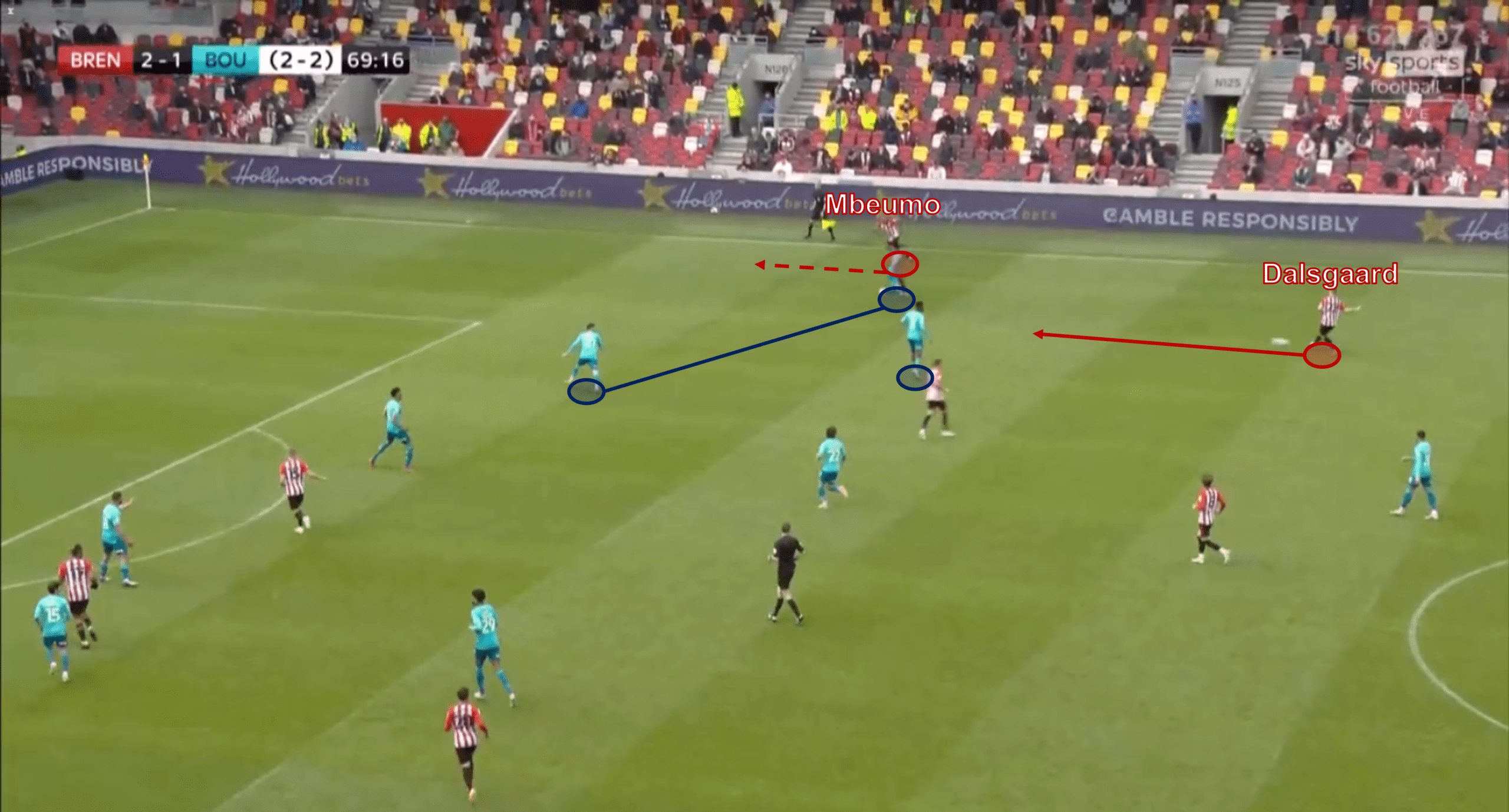
Dalsgaard drives up the pitch and, in the half-space, finds Mbeumo with a through pass out wide.
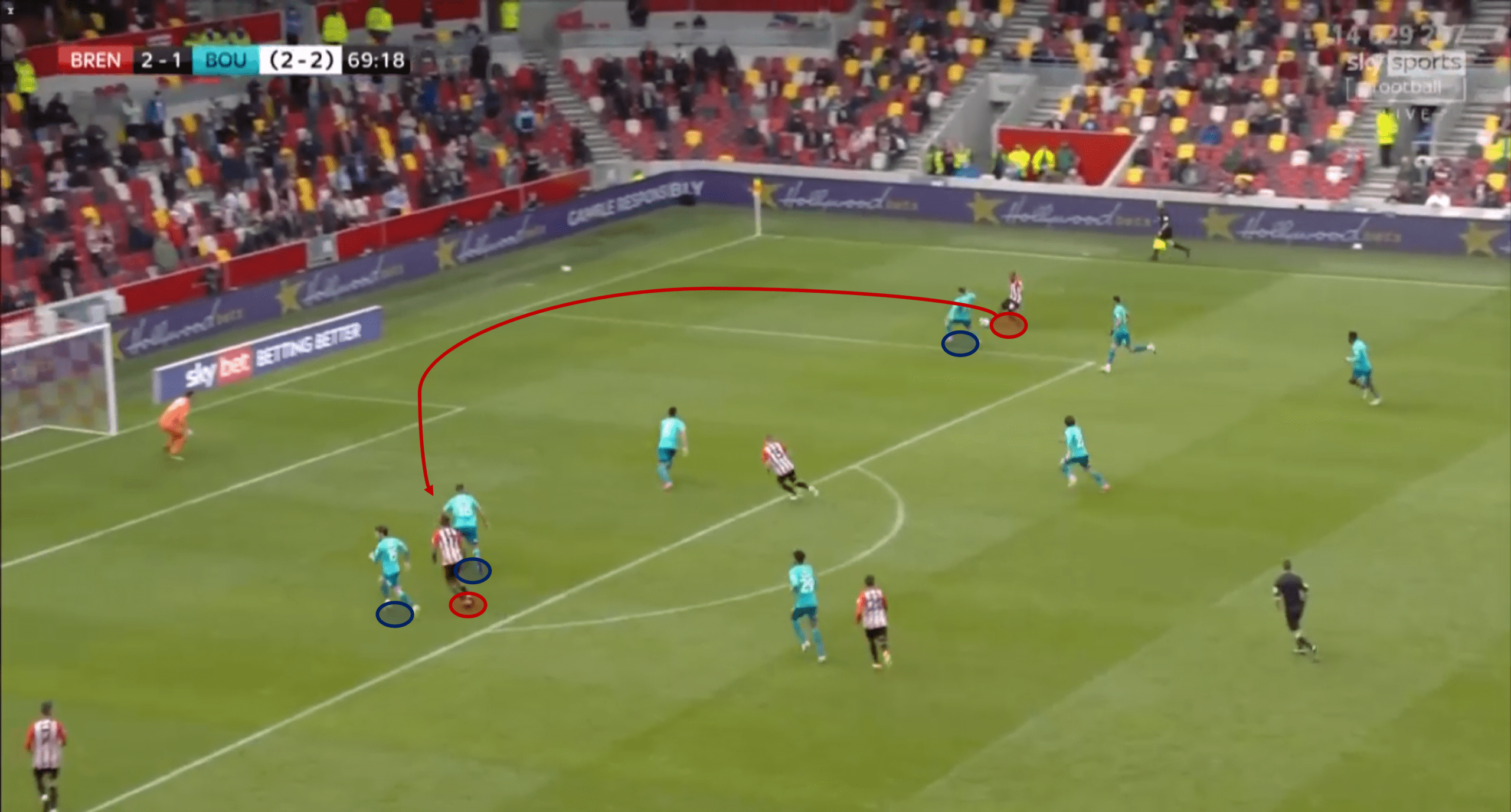
Mbeumo crosses the ball just on the edge of the area, aiming for Toney inside the box, who skies a volleyed effort.
Mbeumo was incredibly hard-working in this match but was unable to demonstrate his full talent. He completed four tackles in the match, a game-high, but his one shot and one key pass were both less than Pinnock and Dalsgaard, two Brentford defenders. It did not impact the result too much in the end, but for Frank, it causes a selection issue, does he pick Mbeumo or tie-winner Forss upfront to start?
Regardless, this tactic happened again and again, and if things do not go Brentford’s way in the first 45 minutes here, expect the same tactic to rear its ugly head. Dalsgaard, Brentford’s leader at right-back, was key to this continuation of play. He was consistently breaking the lines with his progressive passes, not only finding Mbeumo down the right flank but also his teammates on the other side of the pitch.
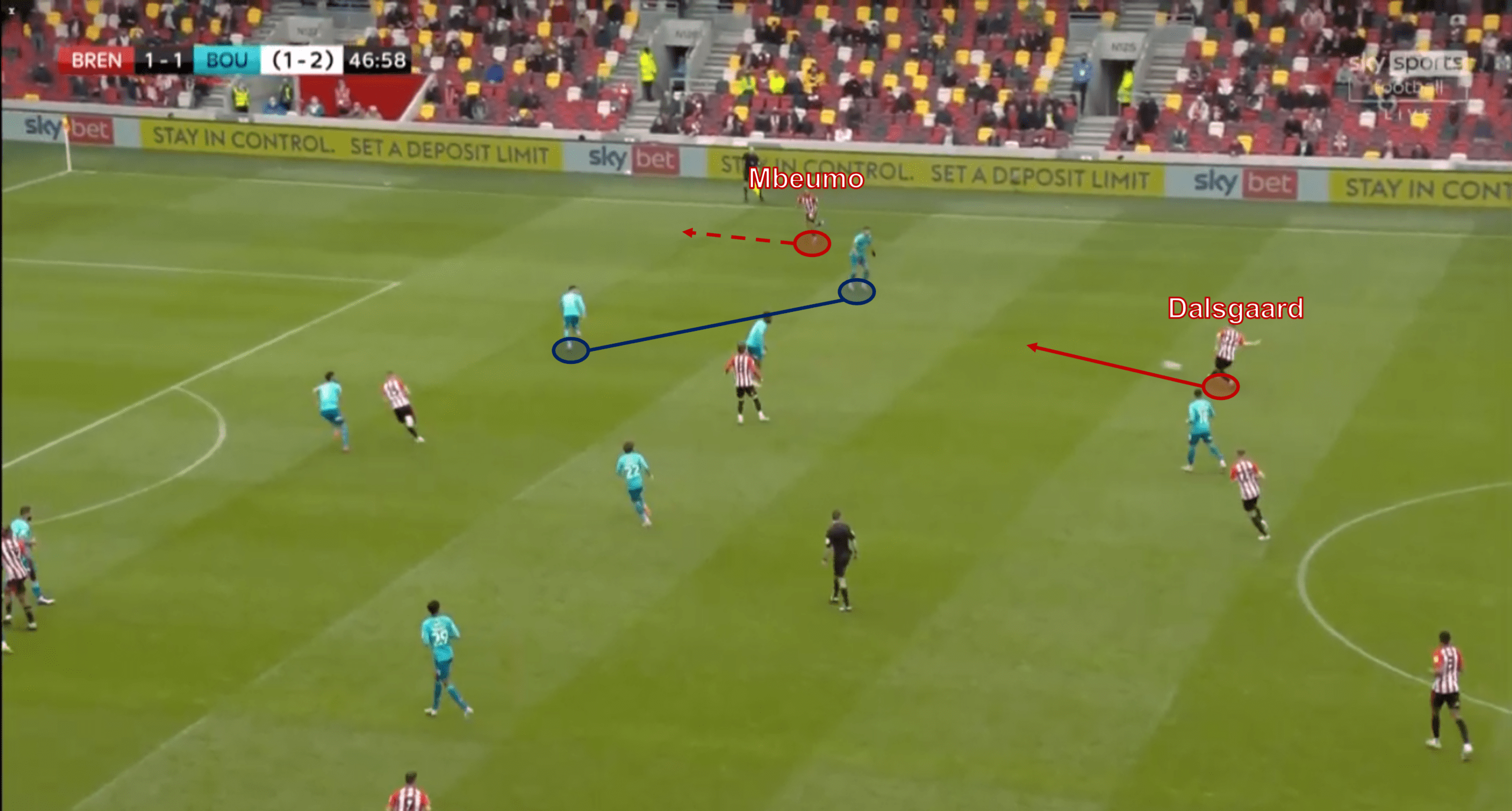
As already demonstrated, Dalsgaard consistently tucked inside which create space to find Mbeumo via the gap between the centre-back and full-back.
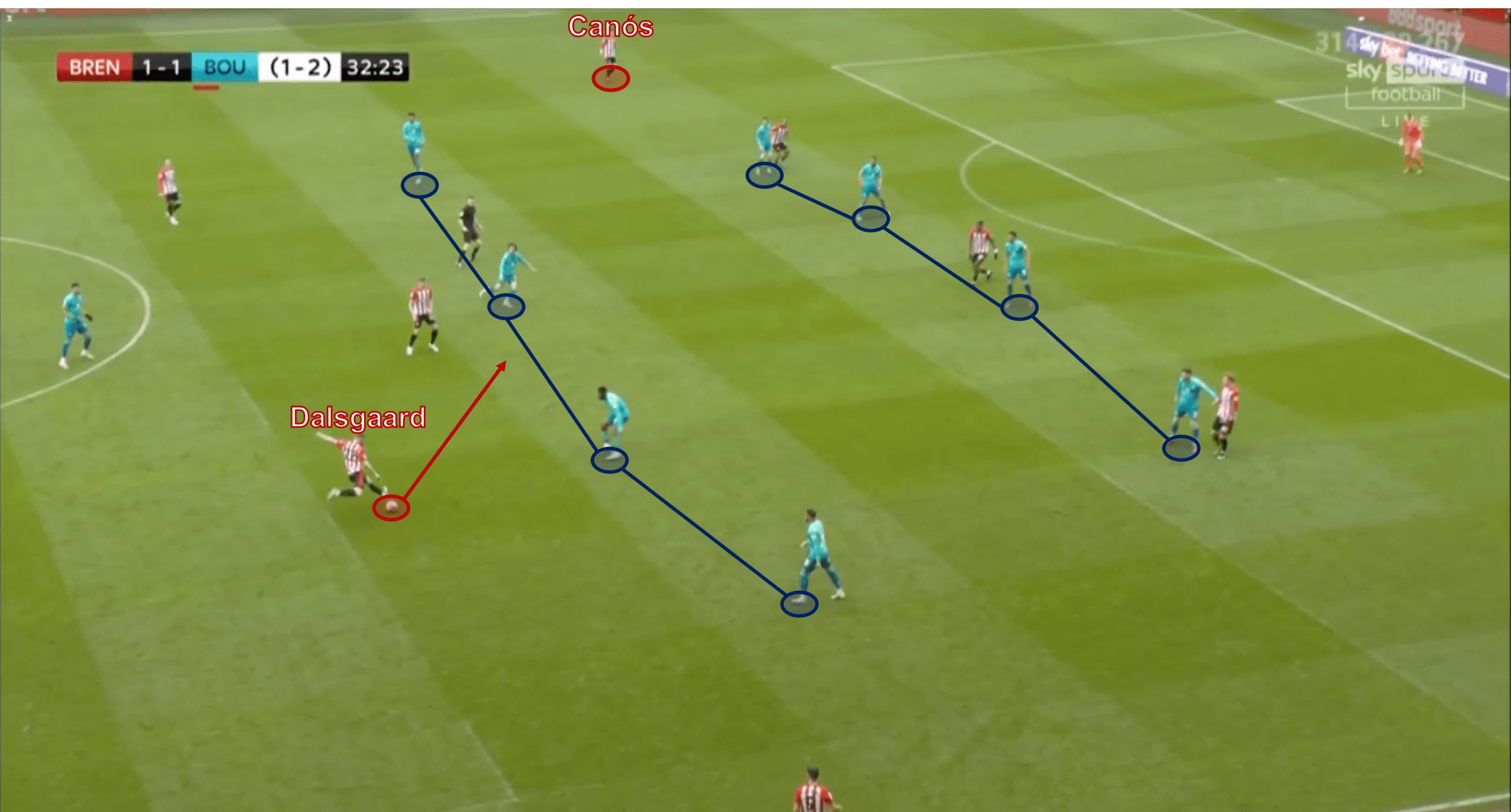
Against a fairly narrow Bournemouth team, Dalsgaard had success with his long passes across the pitch.
In that right centre-back role, Dalsgaard can get on the ball more often than he did in Thomas Frank’s 4-3-3 system, enabling the Danish to get the most out of his excellent ball-playing abilities. In this sense, the 31-year-old can aid his side from a defensive and offensive perspective, recovering the ball and helping the side transition into attack very quickly and dangerously.
This could be an effective way of attacking Swansea, as we saw them struggle against Barnsley down the right-wing in the second-leg that they drew 1-1. It is how Cooper’s side conceded their only goal versus Barnsley in both legs, with right-midfielder Jordan Williams advancing down an open right-wing and finding Cauley Woodrow inside the box with a simple layoff.
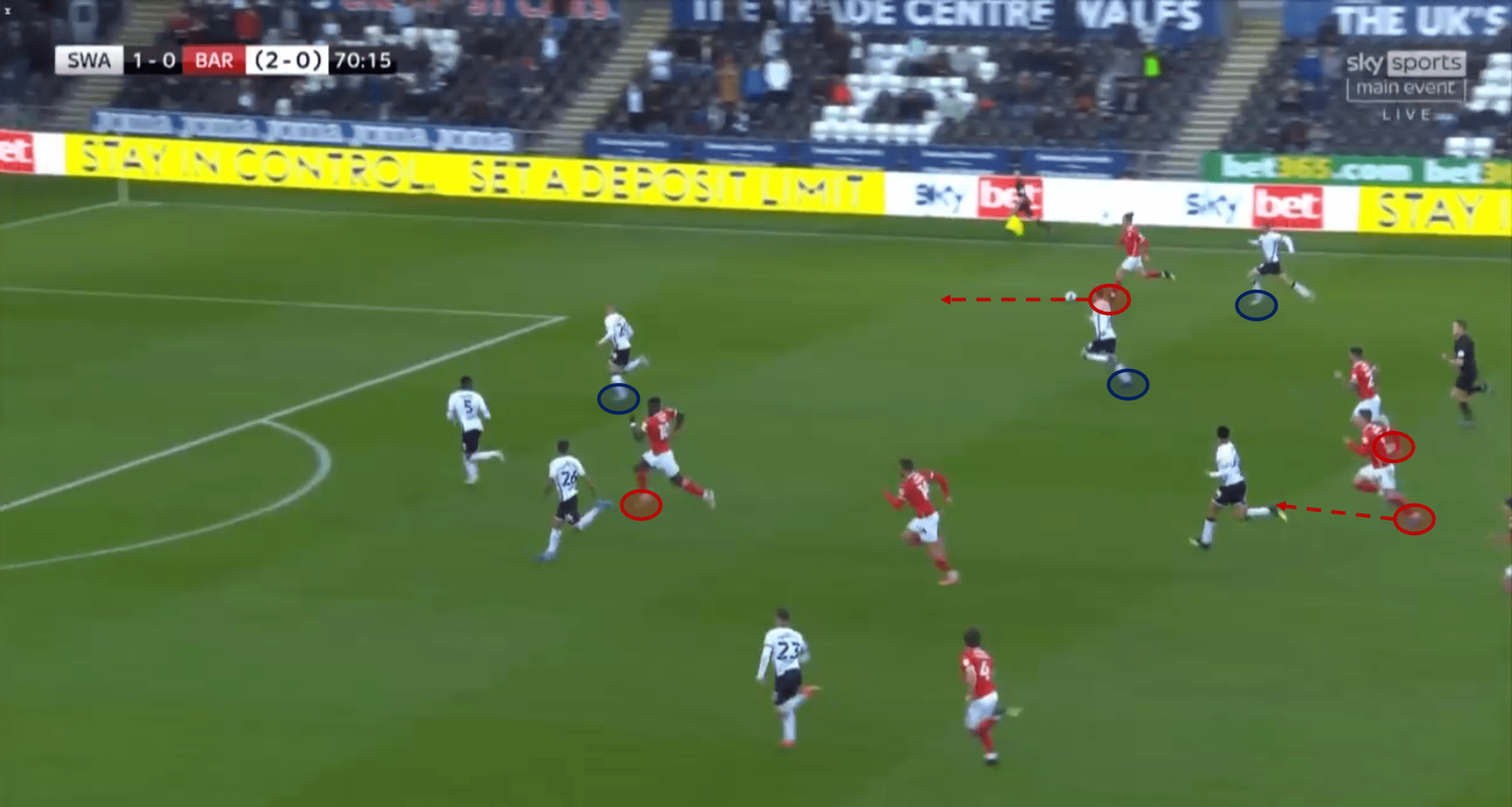
Williams here jaunts down the right flank into yards of space, with Woodrow running from deep.
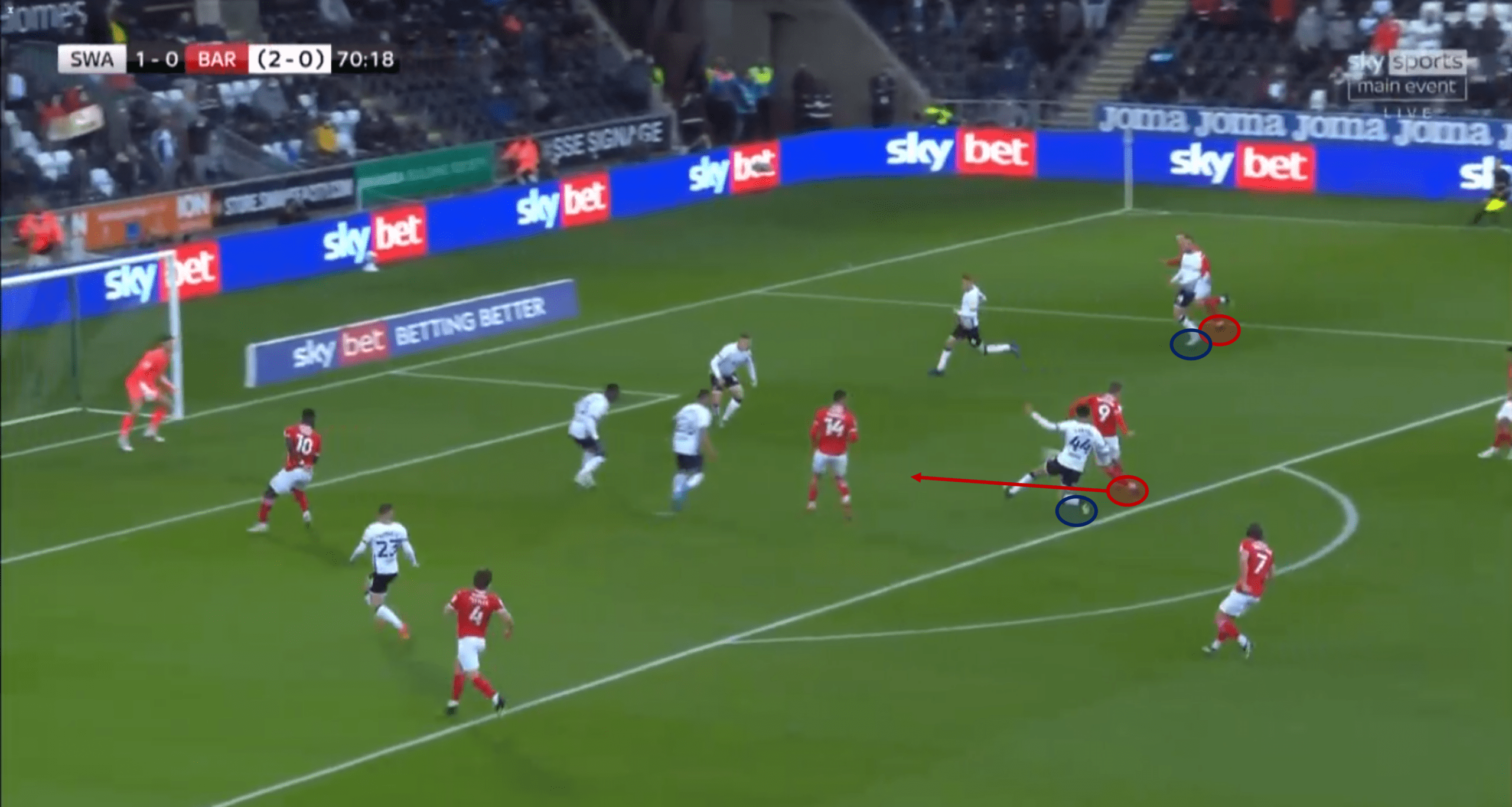
Woodrow inside the area hits the first-time finish into the bottom-right corner.
Swansea will have to cover for this against Brentford if Mbeumo or another player switches out to that right-wing. Mbeumo as the left-footer is a natural choice, as he can go wide and look to cross the ball into the box for Toney who is a strong competitor in the air. However, he will have a stern test against Cabango and Chelsea loanee Guéhi, which we will cover in the next section.
How Swansea’s centre-backs can contain Toney
Swansea under Cooper this season have tended not to press too high or actively. Their PPDA is just 11.12, which ranks as only the 17th highest in the division. When the opposition have the ball in a positional attack, Grimes drops just in front of the centre-back duo of Cabango and Guéhi to help cover any potential passing lanes, allowing the two centre-backs to focus on their marking duties.
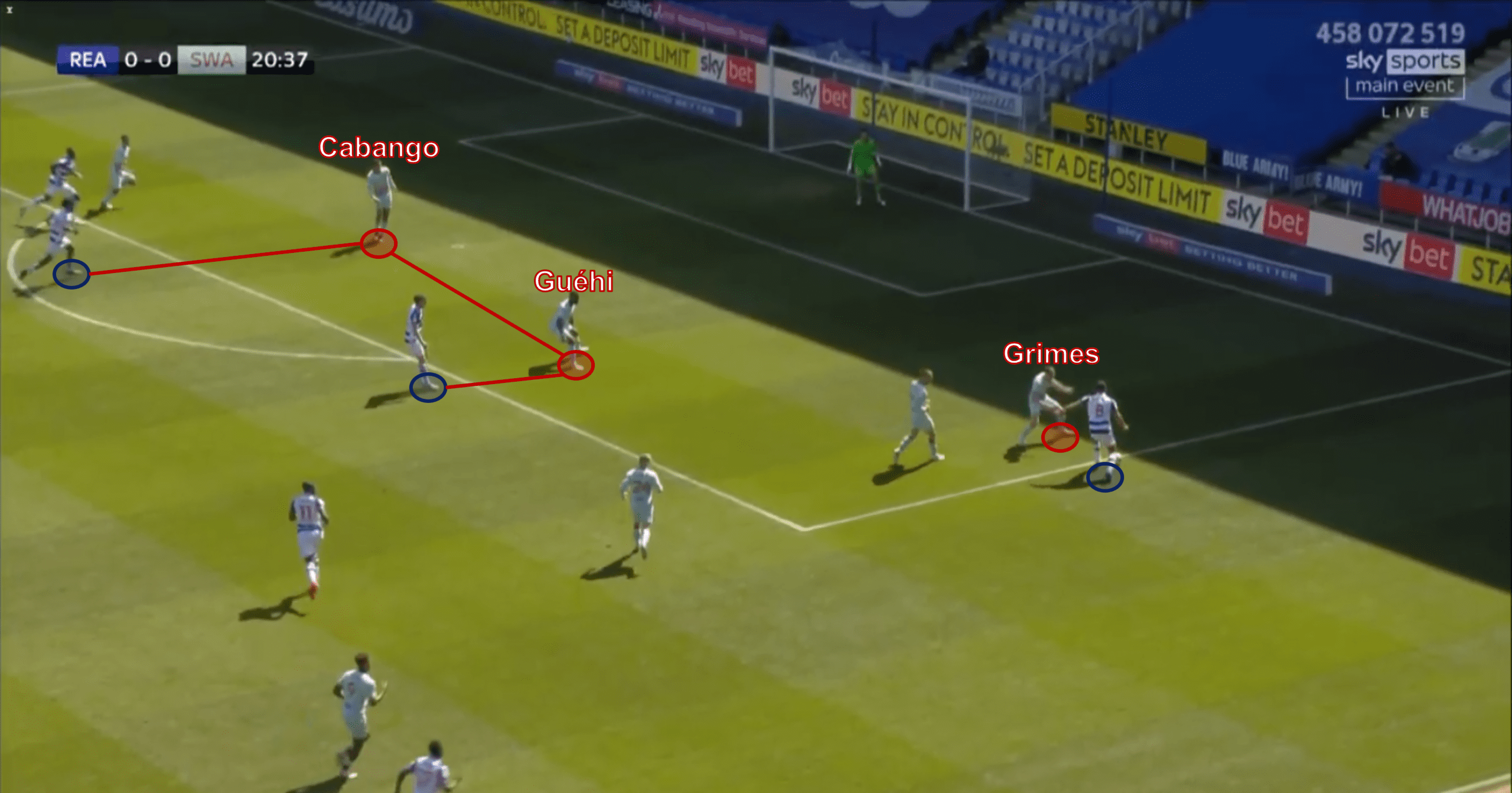
Grimes screens out wide, willing to protect the backline aggressively, leaving Guéhi and Cabango to mark their targets.
Generally, Swansea’s wider midfielders will also tuck inside to block off the central passage. By blocking off the central corridors, they force their opponents to play out wide and combine down the flanks. Cooper’s team are happy for this to happen since they have two centre-backs who are aerially dominant. Cabango is slightly more active in this regard, winning 5 of his attempted 8.2 per 90 (61% success rate), compared to Guéhi who wins 3.4 of his attempted 5.6 per 90 (61% success rate, again).
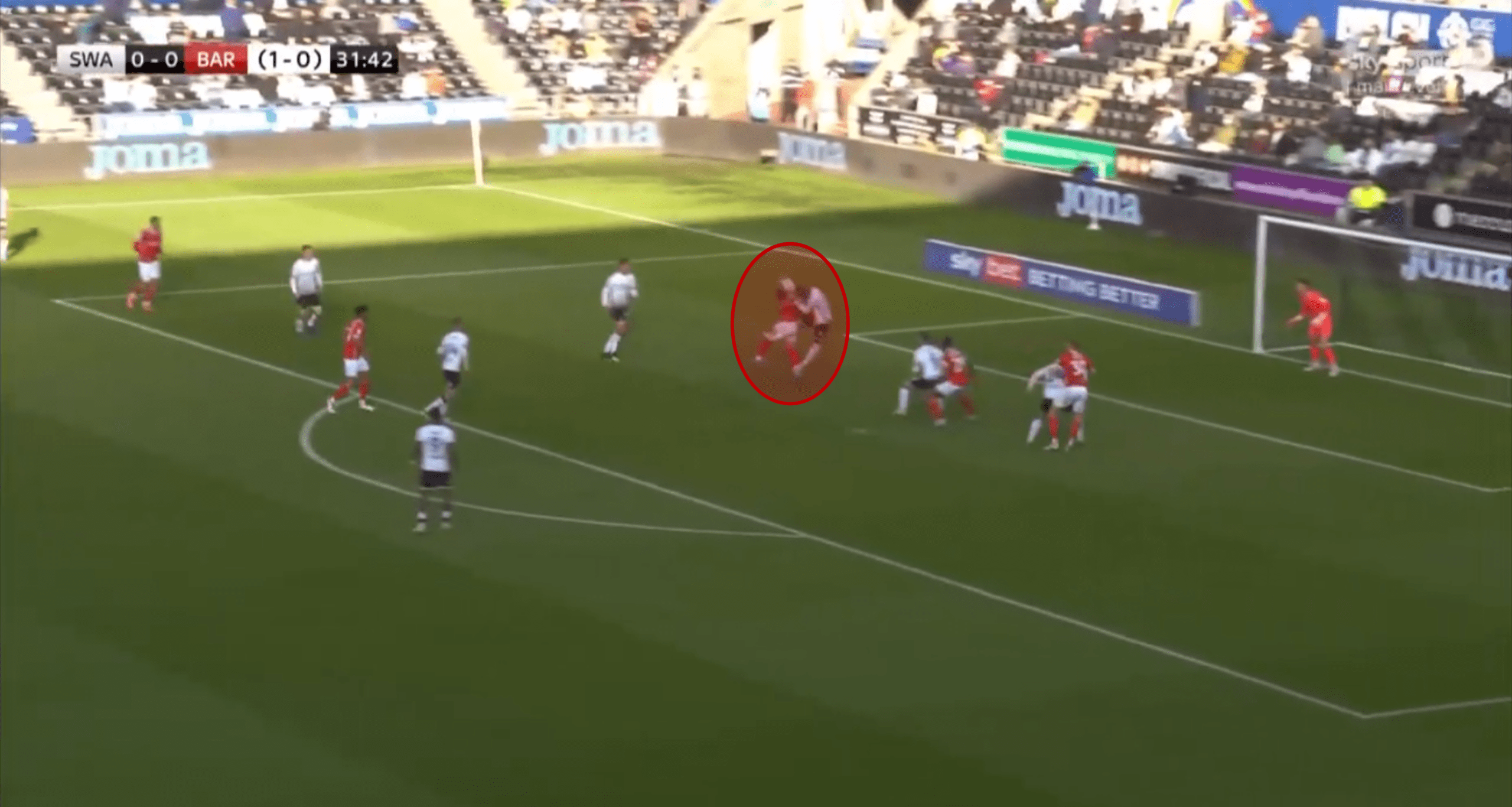
Here we can see Guéhi contesting for an aerial duel against Woodrow, who is no schmuck in the air himself.
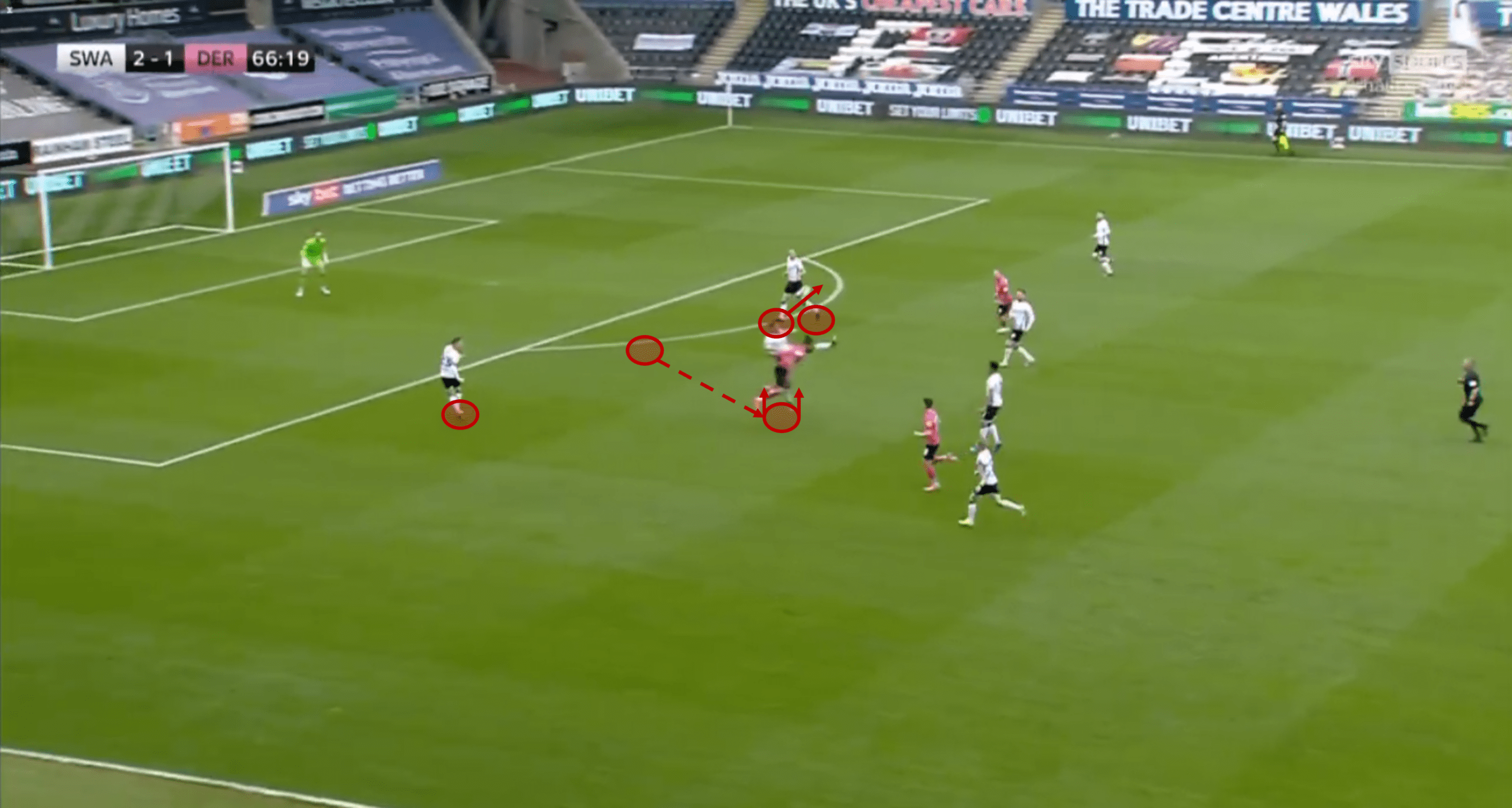
Cabango here steps out of the defensive line to contest aerially against his opponent.
Cabango is the centre-back who will step out of his line more often and aggressively mark his opponent. This can be in an aerial sense, but also when it comes to ground duels. Of the two, Cabango is the stopper, and Guéhi provides a calm sense of cover behind the Welshman. Both aged just 20-years-old, they are both players of tremendous potential, and if Swansea do win this fixture, they can hope to keep Guéhi for another season in the Premier League.
For that to happen, however, they will need to stop frightening forward Toney upfront. He scored a goal against Barnsley in the second-leg, a penalty, but he did take seven shots throughout the match too, and his fantastic scoring rate is there for all to see. He did only manage two of those shots on target, and Bournemouth’s defenders did do quite well to manage the Englishman out of that game overall.
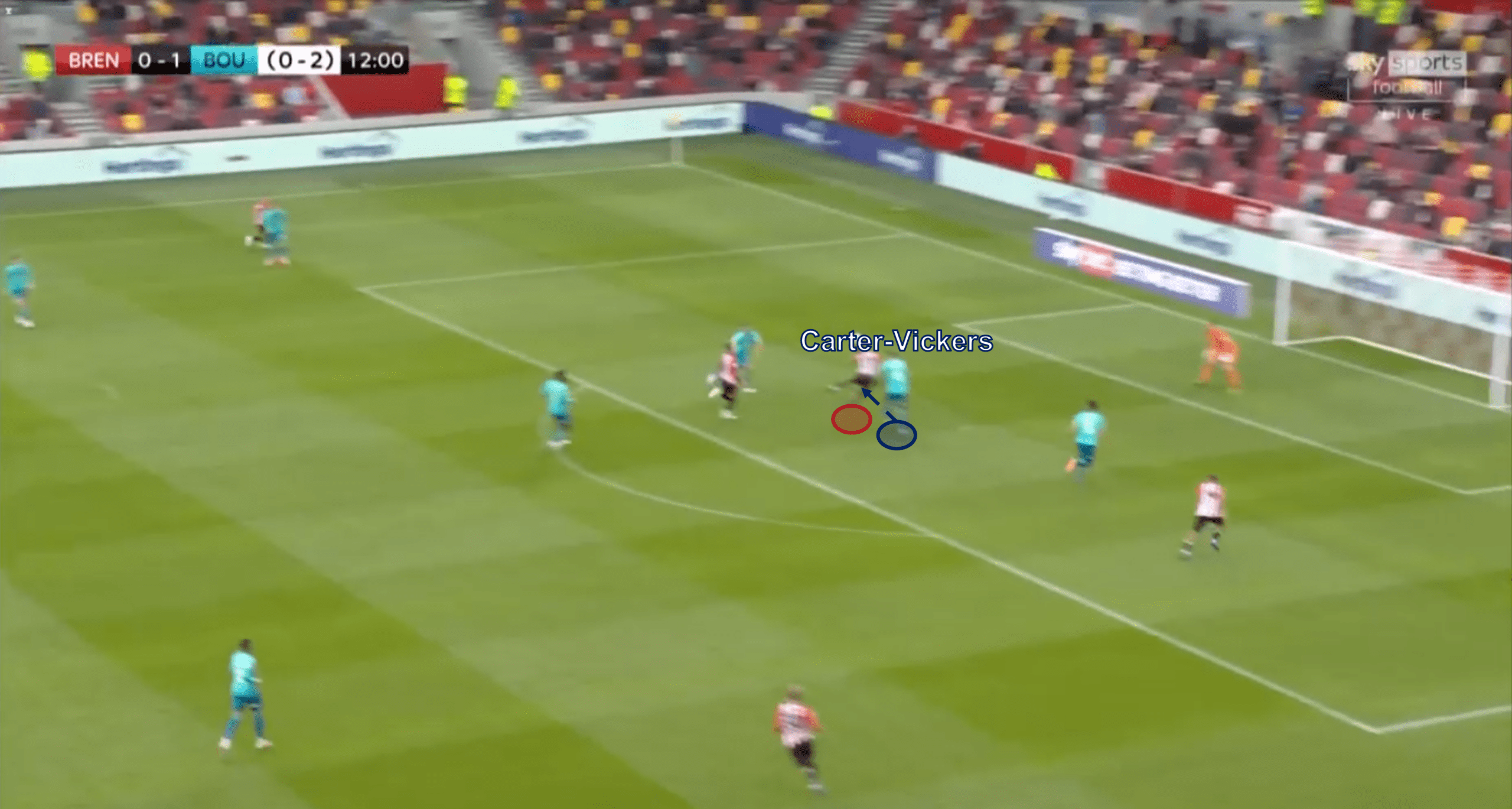
In the above analysis, Spurs loanee Cameron Carter-Vickers forces Toney off-balance and makes him miss the header.
Against Bournemouth, Toney was visibly frustrated, and this did affect his performance in front of goal as the game went on. He missed a few golden opportunities in that second-leg which could have put the game out of sight for Frank’s men, but he showed his exasperation after each miss. If Swansea’s centre-backs can find the balance between rattling Toney and not getting sent off, it could be an effective way of managing him out of the tie.
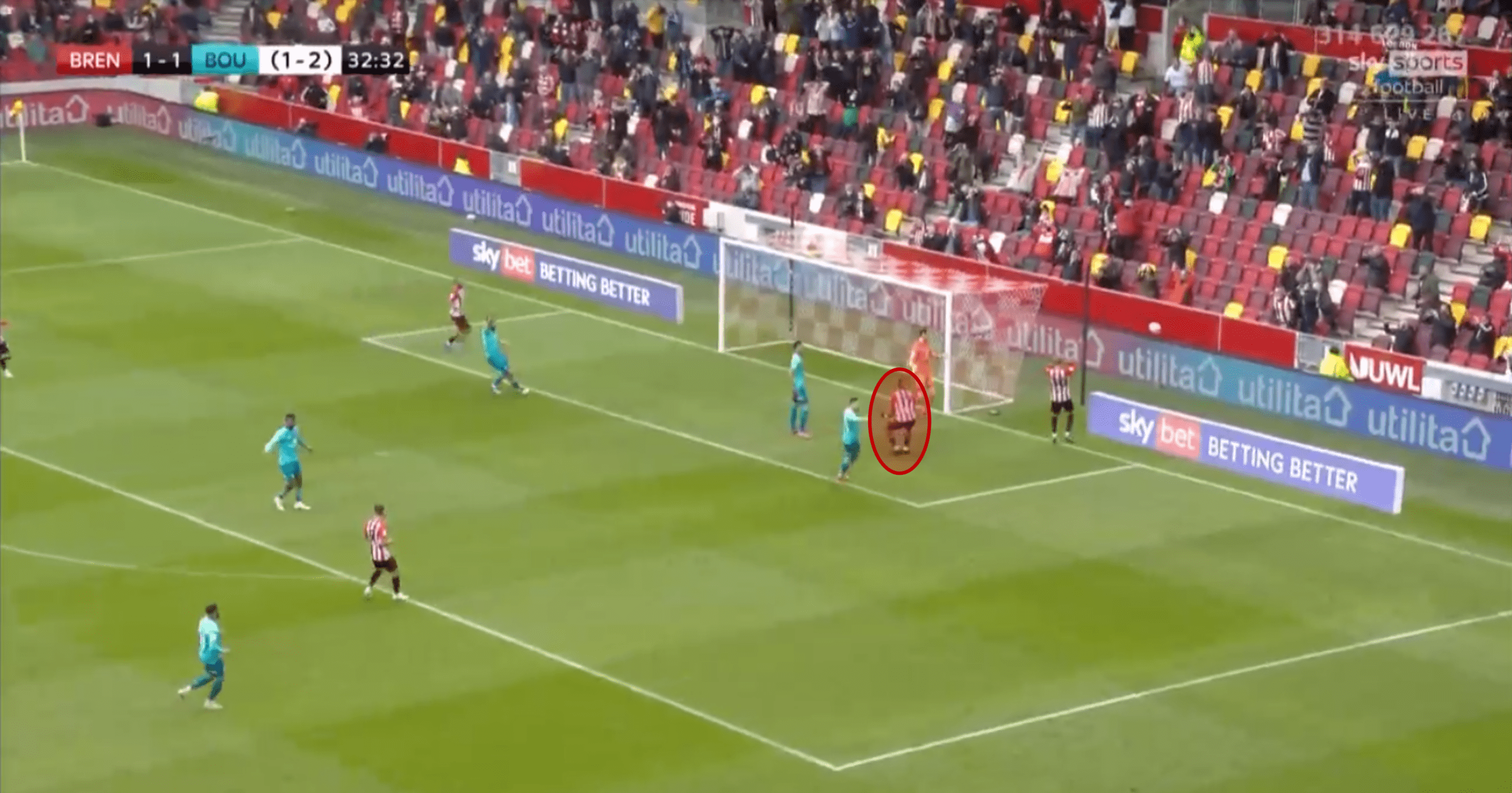
Here we can see Toney visibly frustrated after a poor, mistimed effort at the far post.
Brentford’s high-pressing approach could hurt Swansea
Brentford dominated the ball in both legs of the semi-final, and against a Swansea team who are happy to concede possession, we can predict the same will happen here in the final. Across both ties, Brentford also continued to press high and win the ball back as soon as they lost it, looking to man-mark all of their defenders and midfielders ball-side of the pitch.
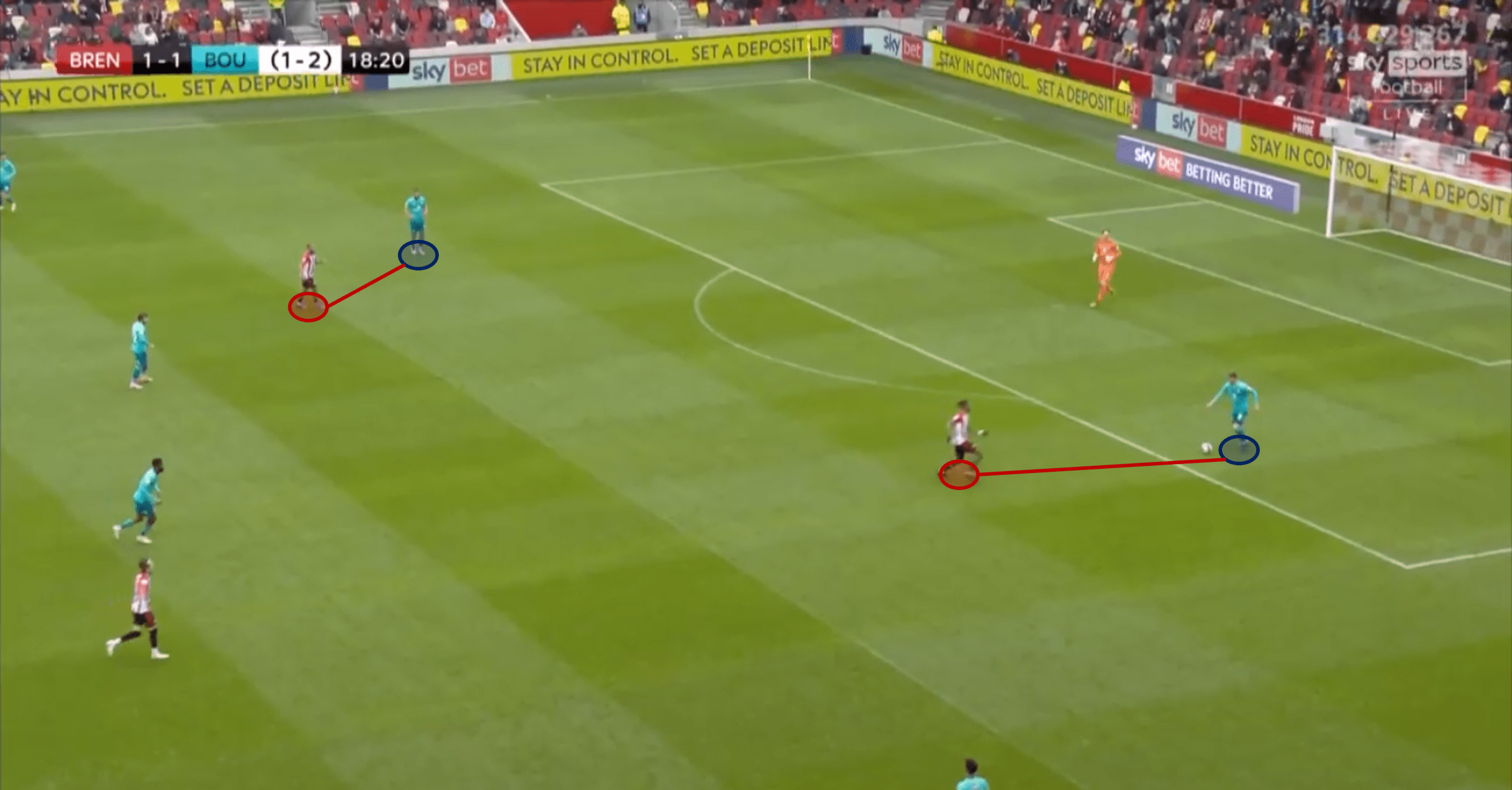
Toney and Mbeumo here press both the Bournemouth centre-backs.
The pressing began at the top of the pitch with the two forwards pressing the one Bournemouth defender, looking to recover the ball and create a goalscoring opportunity. In these moments, they would keep the full-back free and not press them to allow for a pressing trigger. When the ball went wide to the full-back, so would two Brentford players and press the ball and a passing lane.
This pressing system created a couple of goalscoring opportunities across both legs against Bournemouth, with the most notable coming in the second leg. Mbeumo forced his way between the ball and Chris Mepham, dispossessing the Welshman, who promptly falls to the ground and takes the Frenchman with him, resulting in a red card for the defender.
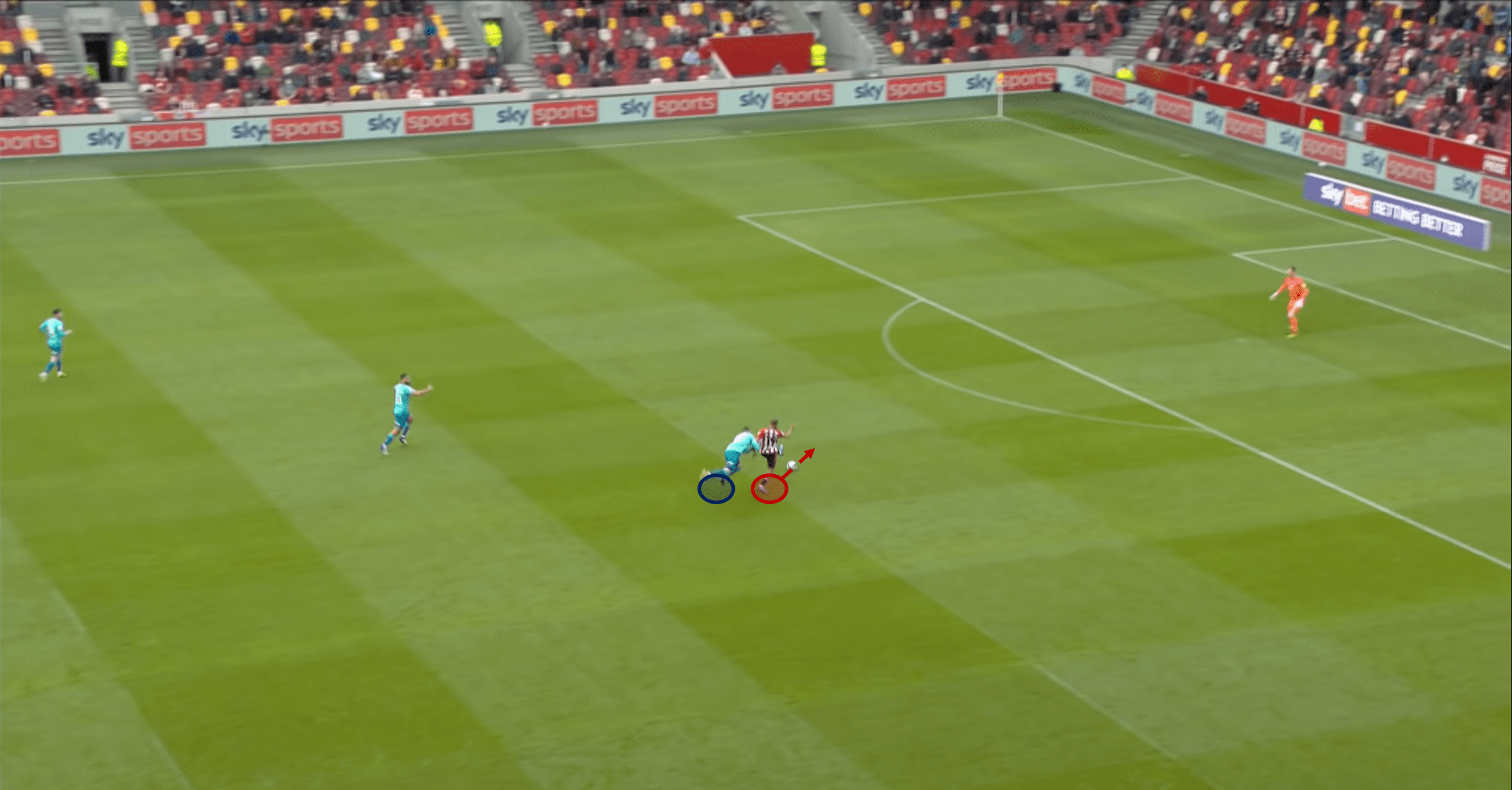
Mbeumo manoeuvres his body in between the ball and the player to recover possession.
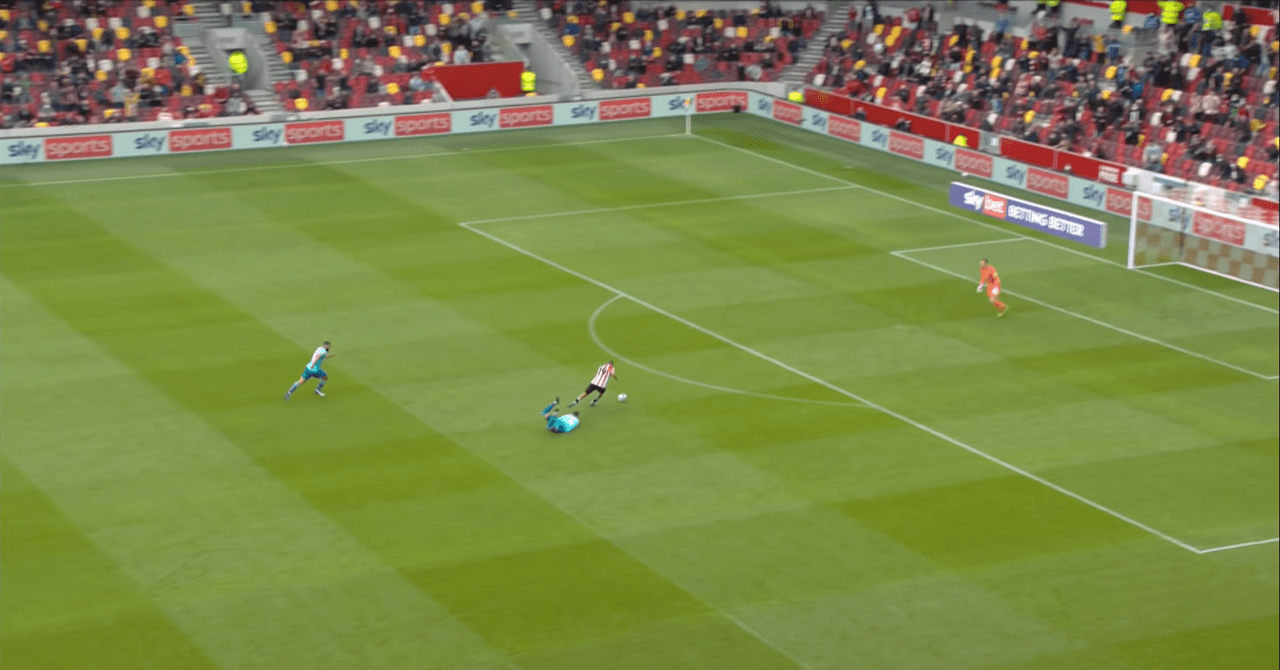
Mepham falls to the ground and uses his arms to take Mbeumo down with him, leading to the red card.
If it were not for Mepham taking down Mbeumo, this would have been a high-value goalscoring opportunity for Brentford, and quality evidence of a pressing system working to full effect. Once the ball goes past the forward pressure, Brentford operate in a 3-5-2 mid-block, where the forwards drop back and stay just ahead of the opposition midfield line. When the ball went wide to the opposition full-back, the wide central midfielder moves out wide to press them.
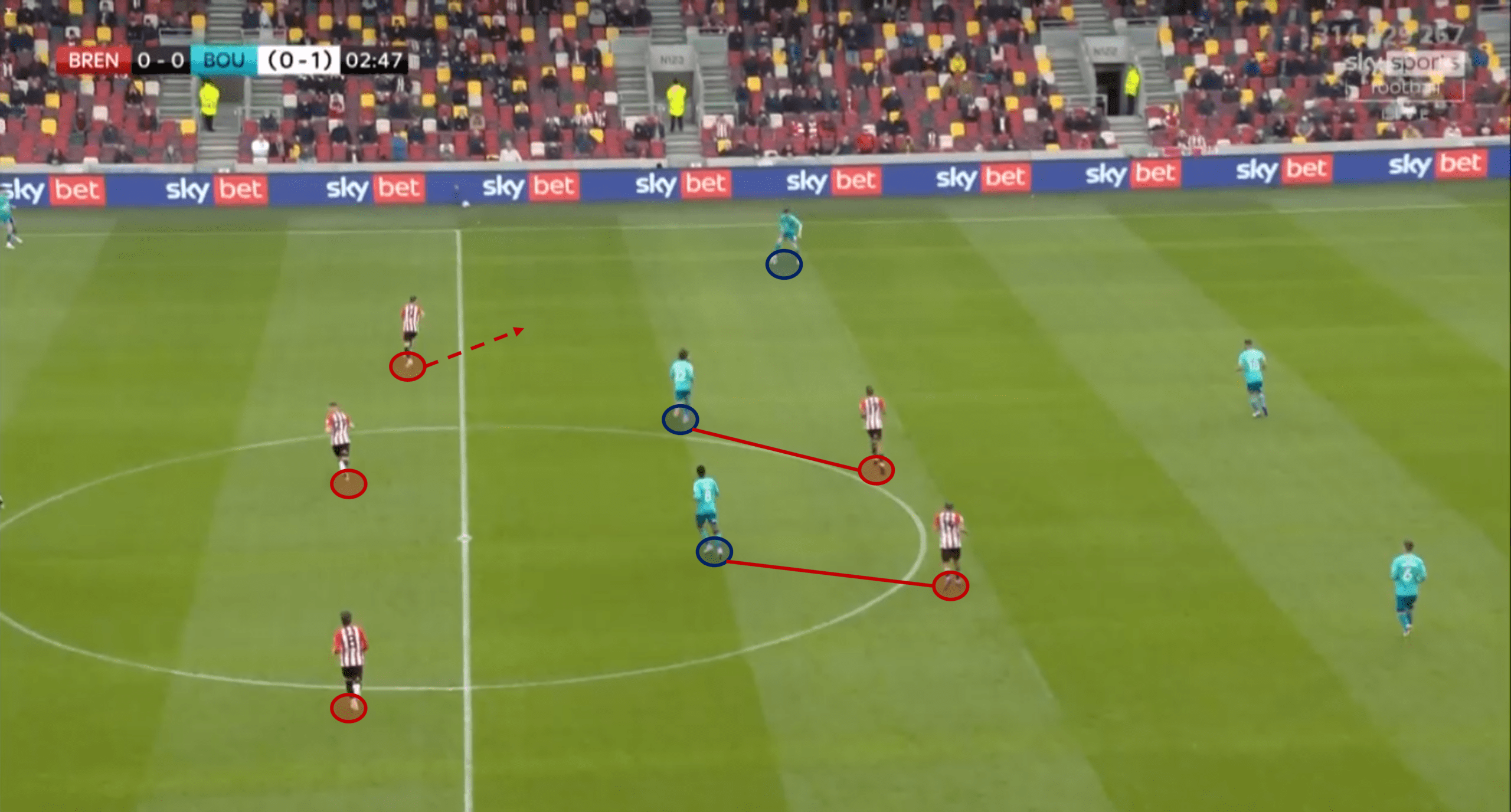
Toney and Mbeumo here shadow-mark the two midfielders, and the widest midfielder goes to press the full-back.
Swansea do, however, have two centre-backs and a deep-lying playmaker who are comfortable on the ball and are reliably calm under pressure. Despite being so young, both of Swansea’s centre-back’s short-passing is sharp and accurate, with their long-range passing losing that accuracy but increasing Swansea’s passing penetration. As a passing triangle, Grimes, Cabango, and Guéhi can combine to bypass Brentford’s intense pressing unit.
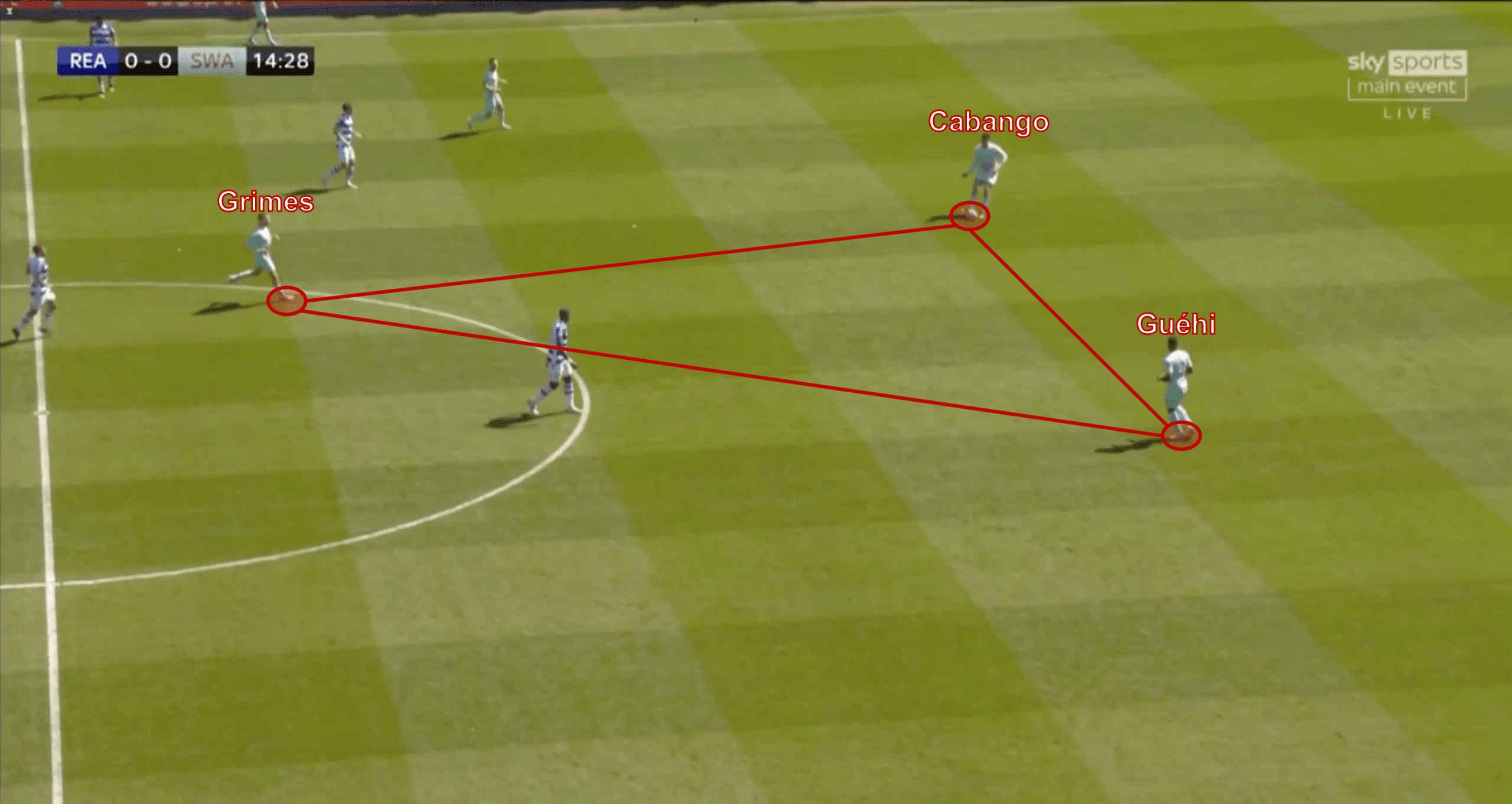
We can see above the passing triangle between Grimes, Cabango, and Guéhi, with Grimes positioned higher to act as a platform for ball progression.
Final predictions
This one is tough to call. Brentford head into the game with better form and goalscoring acumen, while Swansea enter this game with two wins in their last seven matches. Form, although, means very little when it comes to playoff finals. History tells us that the team’s who usually win the final have the toughest mettle. If you can go a goal ahead, it is more often than not about protecting that lead than extending it. See the last two 2-1 finals as perfect examples in 2020 and 2019.
If I were to put my name behind a concrete prediction, I would give Brentford the edge. The second-leg proved their mindset to come back from a two-goal deficit, which is something we have not seen before all that often from The Bees, and that resolute mindset could come in handy here.





Comments